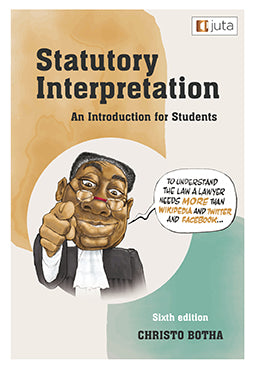
Statutory Interpretation: An Introduction for Students
Interpretation of statutes is about understanding enacted law-texts, in other words, making sense of the total relevant legislative scheme applicable to the situation at hand. Apart from poor reading and writing skills, one of the more striking current interpretation problems is the inability of law students (as well as the latest generation of legal practitioners) to interpret and apply legislation within the total legal environment.
| ISBN: | 9781485139485 |
| Publisher: | Juta Publishers |
| Variant: | Printed |
| Author(s): | Botha, C |
| Edition: | 6th Edition |
Content
PART 1: STATUTE LAW
1 GENERAL INTRODUCTION
2 THE TERM ‘LEGISLATION’
3 IS IT IN FORCE? THE COMMENCEMENT OF LEGISLATION
4 IS IT STILL IN FORCE? CHANGES TO AND THE DEMISE OF LEGISLATION
PART 2: HOW LEGISLATION IS INTERPRETED
5 THEORETICAL FOUNDATIONS
6 A PRACTICAL, INCLUSIVE METHODOLOGY: THE FIVE INTERRELATED DIMENSIONS OF INTERPRETATION AND TRICKS OF THE TRADE: JUDICIAL LAW-MAKING DURING INTERPRETATION, PEREMPTORY AND DIRECTORY PROVISIONS
7 JUDICIAL LAW-MAKING DURING CONCRETISATION
PART 4: CONSTITUTIONAL INTERPRETATION
9 CONSTITUTIONAL INTERPRETATION
We Also Recommend





